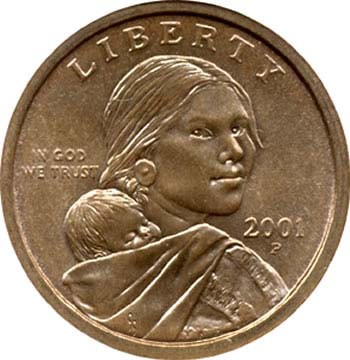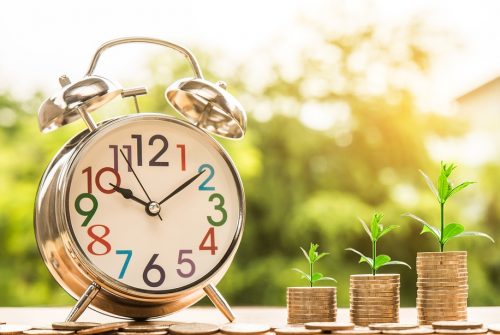
Is it just a coincidence that the US treasury is planning to reintroduce the dollar coin just when the currency is beginning to feel very soft?
We British were brought up on many an American song referring to the silver dollar. But that particular hard currency was phased out well before the second world war.
News that the dollar coin is to be reintroduced came to Britain over a weekend when the financial markets decided to celebrate Thanksgiving by selling the US currency in a big way.
When I say big, I mean big in its impact: as every schoolboy son of American currency traders knows, there is not an awful lot of foreign exchange business conducted over the Thanksgiving weekend.
But the dollar has taken a dive, and the forces driving it lower are now being spotted on all fronts. Simultaneously, bookings for transatlantic flights have, if you will forgive the metaphor, soared, as people speculate about a return to the two-dollar pound, which makes holidays and shopping in the US incredibly cheap for the many intrepid Brits prepared to put up with the indignities of US security checks.
There is a famous saying, credited to Herb Stein, who was chairman of the presidential council of economic advisers under the former president Richard Nixon, to the effect that if something cannot go on for ever, it won’t.
The obvious modern example is the US current balance of payments deficit, recently running at some 7% of gross domestic product. Many a US official used to lecture Latin American countries during the 1980s and 1990s about the need to take action to reduce deficits of such proportions.
The US is different in that it is by far the world’s biggest, strongest economy, and the dollar is more than acceptable all over the world. Nevertheless, there comes a time when enough is enough – as at the end of September 1979, when confidence in the currency simply collapsed and the Federal Reserve chairman, Paul Volcker, had to fly back early from the annual meetings of the World Bank and International Monetary Fund in Belgrade to stop the rot via a series of dramatic increases in interest rates.
In September 1985, the dollar was seriously overvalued, the balance of payments was in heavy deficit and a major devaluation was necessary. On that occasion, the devaluation was in fact engineered because even though the dollar had weakened slightly in the summer, James Baker, the US treasury secretary, and his counterparts in what was then the group of five finance ministers tired of waiting for the markets to get the message and decided on a managed depreciation.
This time the writing has been on Wall Street for several years. Although there has been a gentle decline in the dollar, most serious economists argue that a major adjustment (estimates circulate of up to 20% or more) is necessary to put right a situation where the strongest economy in the world imports 50% more than it exports.
Apart from anything else, there is mounting evidence that the imports binge in which the US has indulged in recent years has seriously aggravated the protectionist pressures that are never far from the congressional surface.
While those of us who have consistently opposed the folly of the Bush/Cheney/Rumsfeld/Blair policy in the Middle East were delighted to see the recent midterm election results, one underappreciated aspect of this has been the chance for the Democratic protectionist tendency to reassert itself.
The devaluation of the dollar that now appears to be under way ought to assist policymakers to resist such protectionist pressures by making US imports more expensive and encouraging export industries.
Another underappreciated aspect of the present US economic conjuncture is that if the slide in the dollar threatens to get out of hand the Fed may have to raise interest rates simply to steady the ship.
For the modern breeds of traders and commentators, who think interest rates are altered only for reasons of inflation, this would be an event indeed – although, of course, a precipitate fall in the dollar would have obvious implications for prices as well.
For a long time now, everybody has been aware of the vulnerability of the dollar, but few wished to be out of line with a market that was seeming to defy Herb Stein’s precept, referred to above.
More recently, there have been strong indications from the Chinese monetary authorities and others that diversification of currency reserves is becoming a more active policy. Arithmetically, a simple decision to place fewer new reserves in dollar-denominated assets can have an appreciable impact on the currency.
In which context, I am much amused by the comment yesterday from Sergei Kamburov, the deputy director of the Russian central bank’s market operations, who said: “We don’t have plans about diversification of our reserve assets towards the euro from the US dollar. We don’t have any plans because we already have done it.”
Many others haven’t. And the implication, as the euro heads for new highs against the dollar, is that the export boom that has led the recent German and eurozone economic recovery will be threatened by further rises in the euro.
Eurozone policymakers may have to rethink their strategies, and we may well be in for a revival of what in the old days we used to call international economic policy coordination. It certainly looks as though there will be a need for such coordination.
c/o-: William Keegan; The Guardian
Originally posted on December 9, 2006 @ 2:34 am




